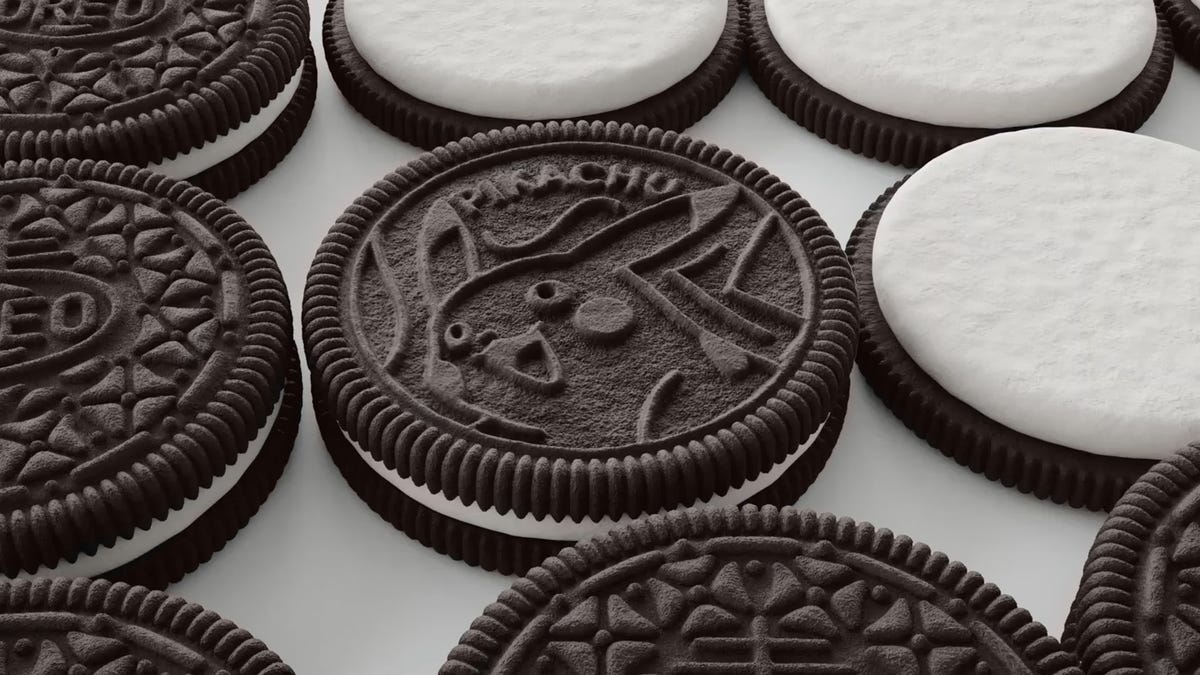MIT Scientists Reveal the Best Way to Twist Open an Oreo Cookie
Thanks to an "oreometer," the team of mechanical engineers can finally answer a burning dessert question.

Scientists didn't study how Pokemon Oreos twist compared to the regular cookies.
The science is in: The creme filling in Oreo cookies is classified as "mushy," and it's very difficult to get it to stick to both sides when you twist one apart.
"I had in my mind that if you twist the Oreos perfectly, you should split the creme perfectly in the middle," MIT researcher Crystal Owens said in a statement. "But what actually happens is the creme almost always comes off of one side."
Owens and three co-authors have an article titled On Oreology, the fracture and flow of "milk's favorite cookie" in the current issue of the journal Physics of Fluids this week.
The team created a so-called "Oreometer," a 3D-printed device that works using rubber bands and is loaded with coins to provide the weight that then translates into the force needed to mechanically twist the two parts of the cookie apart.
"One of the main things we can do with the Oreometer is develop an at-home education and self-discovery plan, where you teach people about basic fluid properties like shear strain and stress," said author Max Fan.
Oreometer is actually a play on words that only a very specific set of fluid dynamics nerds will recognize. That's because the device is actually a rheometer, which is used in labs to measure the way substances flow in response to applied force.
"Rheology can be used to measure the texture of food depending on the failure stresses and strains," Owens said. "We were able to characterize Oreo creme as quantitatively mushy."
The researchers also looked at other factors like different cookie flavors, volume of filling and rotation rate. Flavor and filling made little difference to how the creme wound up distributed across the two halves, but twisting speed mattered.
"If you try to twist the Oreos faster, it will actually take more strain and more stress to break them," Owens said. "So, maybe this is a lesson for people who are stressed and desperate to open their cookies. It'll be easier if you do it a little bit slower."
One other variable involved dipping the cookies in milk, which caused them to degrade and crumble after about a minute, unsurprisingly.
The researchers didn't indicate if they plan to continue their research to pursue the most obvious remaining Oreo-related mystery: What's wrong with people who eat the cookies without event attempting to twist them apart?

